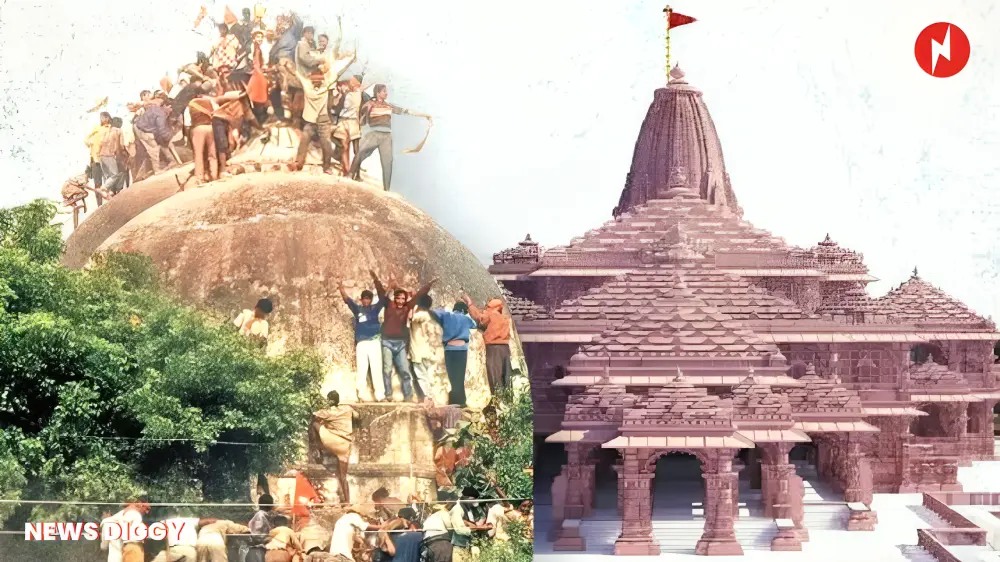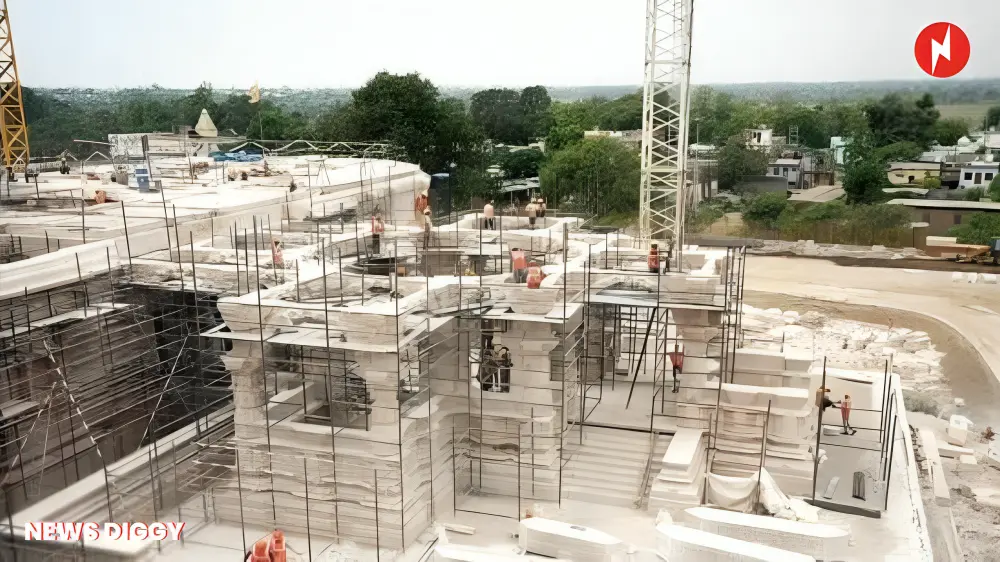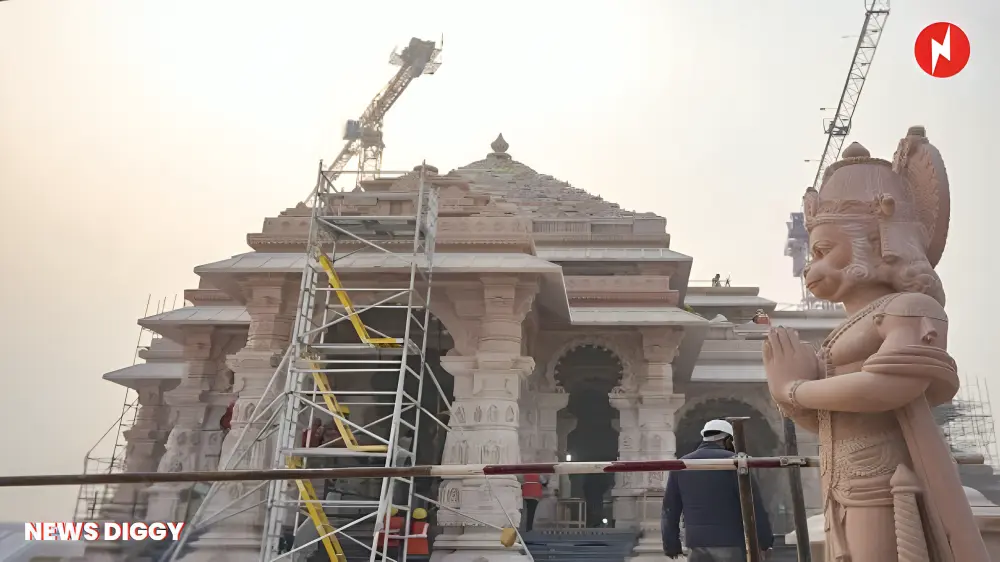On 22nd January,24 ‘Ram Mandir’ in Ayodhya will be inaugurated. Ayodhya temple is built at the location of Ram Janambhoomi, the birthplace of Ram, one of the supreme gods of Hinduism.
This temple is the fruit of an extended conflict. The history of the Ayodhya Ram Mandir is entwined with a multi-century-old, complex historical and socio-religious narrative.
Hindus have long held the view that the location in Ayodhya, Uttar Pradesh, is the birthplace of Lord Ram, a significant character in the epic poem Ramayana. For ages, the site was an important place of worship for Lord Ram.
Babri Masjid and Ram Mandir Conflict
The location is where the Babri Masjid, a mosque, was built in the sixteenth century by the Mughal Emperor Babur. When the mosque was constructed, there was a long-standing disagreement since some Hindus believed that Lord Ram’s birthplace had been the site of an earlier temple.

For years, dispute between the Muslim and Hindu populations over the location continued. The authorities closed the mosque in 1949 to avoid intercommunal tension when Lord Ram idols were discovered within. There were legal disputes that followed.
The conflict Intensified in the 1980s when a number of Hindu organizations began promoting the establishment of a temple at the location, alleging it to be the birthplace of Lord Ram.
When a sizable group of Hindu activists destroyed the Babri Masjid in 1992, there was a great deal of intercommunal violence in India. Religious tensions were greatly heightened by this incident.

Following the destruction of the Babri Masjid mosque in Ayodhya on December 6, 1992, a string of violent incidents took place, mostly across India. These incidents were known as the Babri Masjid riots. Numerous incidents of communal violence between Muslims and Hindus occurred across the nation as a result of the demolition.
Hindu nationalist organizations, which held a political demonstration and claimed that the Babri Masjid was constructed on the site of Lord Ram’s birth, were the ones who started the event. Even though there was a legal dispute about the mosque, a sizable mob destroyed it as a result of the gathering turning violent.
Numerous cities saw riots and conflicts between Muslims and Hindus as a result of the mosque’s demolition, which resulted in a huge loss of life and property. Community tensions quickly become quite intense.
Read More: G20 summit Delhi: शिखर G20 सम्मेलन का सफल आयोजन दिल्ली के प्रगति मैदान में किया गया।
Curfews, communal polarization, and widespread violence were the outcomes of the sharply rising communal tensions. The demolition’s aftermath and the riots that followed had a significant effect on Indian politics and society, causing religious division and shredding the nation’s social cohesion. The incident also sparked a long legal dispute over who owned the property.

After many years of court cases, the Indian Supreme Court issued its decision in November 2019. The land in question needs to be given to a trust so that a Hindu temple honoring Lord Ram can be constructed, the court decided. The government was also ordered by the court to provide the Muslim community another plot of land so they could build a mosque on it.
Narendra Modi laid the foundation stone of Ram Mandir in Ayodhya
Prime Minister Narendra Modi conducted the Bhumi Poojan ceremony and set the temple’s foundation stone on August 5, 2020, following the Supreme Court’s ruling. The Shri Ram Janmabhoomi Teerth Kshetra Trust is supervising the temple’s construction.
The temple space is 54,700 square feet, or around 2.7 acres of land. The Ram Mandir Complex would have enough room to hold a million worshippers at a time with its overall size of about 70 acres.
It is estimated that the temple’s construction will cost between Rs. 1,400 crore and Rs. 1,800 crore. According to representatives of the Ram Janmabhoomi Teerth Kshetra Nyas, the temple trust is getting donations worth Rs 60–70 lakh for the construction of the magnificent temple.
The Ram Mandir’s superstructure will be shaped by carvings made from the Rajasthan Bansi Paharpur stone, a rare pink marble stone valued for its toughness and beauty. The main architect of the temple is Chandrakant Bhai Sompura, whose father, Ashish Sompura, and grandfather, Prabhakar ji Sompura, created the Somnath Temple.
According to Sompura, the Ram Mandir is being constructed in the Nagara style, according to the principles of Vastu Shastra. The east entrance would be designed in the Gopuram architectural style, which is typical of the southern temples. The life of Lord Ram would be depicted in artwork that adorned the temple walls.
The sanctorum of the mandir would be octagonal in design, with a circular boundary. The mandir will include five domes and a single, 161-foot-tall tower. The idol of Ram Lalla, the baby incarnation of the Lord, will be illuminated by sunlight in the temple’s central area, known as Garbh Griha, which spans three stories. There will be two Lord Ram idols. The actual idol, found in 1949 and kept in the tent for many years, will be one of them.
The other will be a massive statue that can be seen for a great distance. On January 22, the renowned Karnataka sculptor Arun Yogiraj will place the idol of “Ram Lalla” in the Ram shrine in Ayodhya. Invitation are sent nation wide for the inauguration of the temple, from big Bollywood celebrities to politicians are being invited.
Donations and gifts from country wide are being sent to Ayodhya. A 108-foot-long incense stick that a Gujarati farmer has manufactured to be given to Lord Ram is currently being transported on a trailer to Uttar Pradesh.
Special presents sent for the ram temple in Ayodhya ahead of the consecration event on January 22 include a 2,100-kg bell, a 1,100-kg big lamp, gold boots, a 10-foot-high lock and key, and a clock that concurrently indicates time in eight nations. The artists who created the one-of-a-kind presents hope the opulent shrine will utilize them.
More than 3,000 gifts for Lord Ram from Sita’s birthplace in Janakpur in Nepal have arrived in Ayodhya. Additionally, a team from Sri Lanka paid Ayodhya a visit and received a unique gift from Ashok Vatika.
One lakh lados are being prepared for the commencement at Ayodhya. In order to develop public utilities close to the temple, the temple construction committee has also purchased 71 acres of land.
The country has been advised by the temple trust not to visit the temple in order to prevent congestion in Ayodhya during the initial days of the inauguration. Additionally, they have requested that the VIPs avoid going to Ayodhya on the day of the inauguration because doing so will result in poor management.
In his Dasara speech, Chief Mohan Bhagwat of the Rashtriya Swayamsewak Sangh (RSS) urged the Indian populace to host events in nearby temples in observance of the opening of the Ram Mandir.



